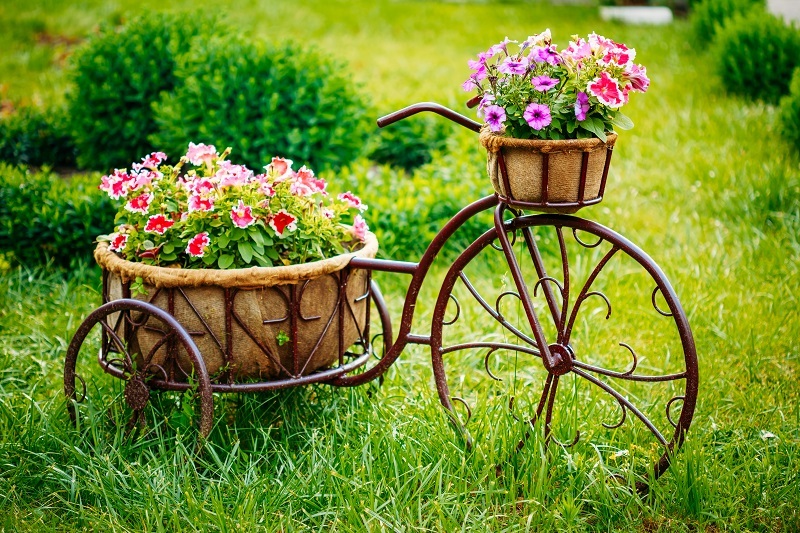Brighten Your Day and Boost Well-Being by Surrounding Yourself with Flowers
In an increasingly fast-paced world, finding simple yet effective ways to improve your mood and overall health is essential. One time-tested method is to embrace the beauty of flowers. Surrounding yourself with flowers doesn't just fill a space with color and fragrance--it can brighten your day and significantly boost your well-being. This article will explore the scientific benefits, cultural importance, and practical ways to incorporate flowers into your daily life to enjoy their many advantages.
Why Flowers Matter for Your Well-being
Flowers are more than just ornamental decorations. Numerous studies have demonstrated their positive influence on our emotional, psychological, and even physical health. When you surround yourself with flowers, you're not just adding aesthetic appeal--you are investing in your mental and emotional health.
The Science Behind Surrounding Yourself with Flowers
Science increasingly acknowledges the therapeutic effects of flowers on our well-being. Having fresh bouquets or potted blooms nearby helps to:
- Elevate mood: The colors and scents of flowers can trigger happy emotions and alleviate depressive symptoms.
- Reduce stress and anxiety: Nature's beauty has a calming effect, counteracting the pressures of daily life.
- Enhance cognitive performance: Exposure to natural beauty, like that of flowers, can boost concentration and creativity.
- Foster social connection: Gifting or sharing flowers strengthens relationships and brings people closer.
A landmark study by Rutgers University revealed that flowers have an immediate impact on happiness and long-term positive effects on mood. Participants received flowers and reported increased contact with family and friends, signifying flowers' unique power to foster emotional wellness.
The Psychological Power of Flowers
Brightening your day with flowers can trigger a domino effect on the mind and emotions. The vibrant hues and fragrances stimulate the senses, evoking feelings of pleasure and tranquility. In fact, floral therapy is a recognized practice in several cultures for combatting sadness and fostering hope.

Color Psychology: How Flower Colors Affect Mood
The color of the flowers you surround yourself with can influence your mood and productivity. Here's how different hues can shape your mental state:
- Red: Symbolizes passion and energy. Red flowers like roses can invigorate and add excitement to your environment.
- Yellow: Represents joy and optimism. Sunflowers and tulips bring cheer and stimulate happiness.
- Blue: Denotes calm and serenity. Hydrangeas and blue irises can help you relax and combat anxiety.
- White: Suggests purity and peace. White lilies or daisies create a sense of cleanliness and clarity.
- Purple: Implies luxury and creativity. Lavender or violets inspire imagination and provide comfort.
By thoughtfully choosing flower colors, you can improve your mood and create spaces conducive to specific activities, whether you need an energy boost or a calm atmosphere for relaxation.
Health Benefits of Surrounding Yourself with Flowers
Beyond their emotional impact, there are tangible health benefits to having flowers in your environment. Consistent exposure to floral arrangements can:
- Lower blood pressure: The sight and scent of flowers promote relaxation and may help reduce hypertension.
- Improve air quality: Certain flowers, such as peace lilies or gerbera daisies, purify the air by removing toxins.
- Boost immunity: Lower stress levels positively influence immune functioning, making you less susceptible to illness.
- Accelerate healing: Studies show that hospital patients with flowers in their rooms report faster recovery and less pain.
Flowers in Holistic Medicine
In holistic and alternative medicine, flowers are revered for their healing qualities. Essential oils derived from flowers like lavender, chamomile, and rose are commonly used in aromatherapy to ease stress, promote sleep, and uplift mood. Additionally, flower essences are used in some health practices to restore emotional balance.
Easy Ways to Surround Yourself with More Flowers
You don't have to be a gardening expert to reap the benefits of being surrounded by flowers. Here are some uncomplicated strategies to bring more blooms into your life:
- Bring fresh flowers home regularly: Purchase seasonal bouquets from your local florist or market.
- Create a flower arrangement corner: Dedicate a table or window ledge for rotating floral displays.
- Grow potted flowering plants: Options like African violets or orchids can thrive indoors with minimal care.
- Add floral touches to your workspace: Place a small vase near your desk to keep stress at bay and encourage creativity.
- Join a flower arranging class: Learning the art of floral arrangement enhances your appreciation and brings joy.
Caring for Flowers at Home
To enjoy the positive effects of flowers for longer, follow these flower care tips:
- Trim stems diagonally and change the water every two days.
- Keep flowers away from direct sunlight or heat sources.
- Add nutrient packets or a teaspoon of sugar and vinegar to extend freshness.
- Remove wilted petals and leaves promptly.
Cultural and Symbolic Value of Flowers
Around the world, flowers are cherished not only for their natural beauty but also for their symbolic meanings. From romantic roses on Valentine's Day to daisies representing new beginnings, flowers play a significant role in marking special occasions and life transitions.
Flowers in Rituals and Celebrations
Flowers are integral to rituals across cultures:
- Weddings: Bouquets bring good fortune to couples and symbolize love and unity.
- Festivals: Events like Japan's Cherry Blossom Festival demonstrate the fleeting beauty of life.
- Remembrance: Laying flowers at memorial sites expresses honor and respect.
The act of giving or receiving flowers strengthens bonds and can instantly brighten someone's day, making both the giver and receiver experience positive emotions.
Flowers in the Workplace: A Secret to Enhanced Productivity
If you're searching for a way to boost morale at work, integrating fresh flowers into the workplace is a simple solution. Studies from Texas A&M University found that office workers exposed to natural elements like flowers reported higher creativity and problem-solving skills. Plus, a vibrant workspace filled with blooms helps foster a collaborative, positive atmosphere that motivates teams.
How to Choose Office-Appropriate Flowers
- Opt for low-maintenance varieties like succulents, kalanchoes, or peace lilies.
- Consider hypoallergenic choices if colleagues have sensitivities.
- Pick colors that align with your company culture or branding for added visual harmony.
Gardening: A Joyful Path to Mental Wellness
Participating in gardening is a powerful form of self-care. Growing your own flowers, whether it's a backyard rose bush or a balcony planter of pansies, brings remarkable mental health returns. Gardening combines physical activity, mindfulness, and the satisfaction of nurturing life, making it an ideal hobby for those seeking happiness and a sense of accomplishment.
Key Benefits of Flower Gardening
- Reduces depression and anxiety by connecting you to nature's rhythms.
- Provides mild physical exercise, improving strength and flexibility.
- Encourages patience and mindfulness as you watch blooms develop over time.
- Delivers a regular supply of fresh flowers for your home and to share with friends.
Flower-Inspired Mindfulness and Self-Care Practices
Incorporating flowers into mindfulness routines can further boost your well-being. Try these practices:
- Flower meditation: Focus on the intricate details and colors of a flower to anchor your mind in the present moment.
- Floral journaling: Draw or describe flowers you encounter--this creative act fosters gratitude and appreciation.
- DIY floral baths: Adding fresh petals to a soak can provide calming aromatic benefits.
- Essential oil diffusers: Use flower-derived scents like rose or jasmine in aromatherapy for stress relief.
Pet-Friendly Flower Choices
If you have pets, it's important to select flowers that are safe for them. Some common flowers can be toxic to cats and dogs. Safe options include:
- Roses
- Sunflowers
- Snapdragons
- Orchids
- Pansies
Avoid lilies, azaleas, and tulips, as they can be harmful if ingested.

Boosting Well-Being Year-Round with Flowers
Seasonal changes needn't keep you from the joy of being surrounded by flowers. Here's how to make the most of blooms all year long:
- Spring/Summer: Enjoy vibrant, fragrant garden-grown or purchased bouquets of tulips, peonies, and daisies.
- Autumn: Decorate with marigolds, chrysanthemums, and asters for rich tones and coziness.
- Winter: Choose amaryllis, poinsettias, or even dried floral arrangements to brighten up gray days.
Preserving Flowers for Lasting Joy
Try pressing blooms between book pages, drying them upside down, or displaying in shadow boxes to keep their beauty close, even out of season.
Conclusion: The Simple Power of Flowers
Surround yourself with flowers and discover a host of advantages that go beyond mere aesthetics. Their ability to brighten your day and boost your well-being is proven by both science and centuries of tradition. Whether you bring home a single bouquet, nurture a garden, or decorate your workspace, making flowers a part of your environment is a powerful, accessible act of self-care.
Begin today--pick up some fresh blooms, plant seeds for the future, and turn each day into a more joyful, health-filled experience through the enduring magic of flowers.

